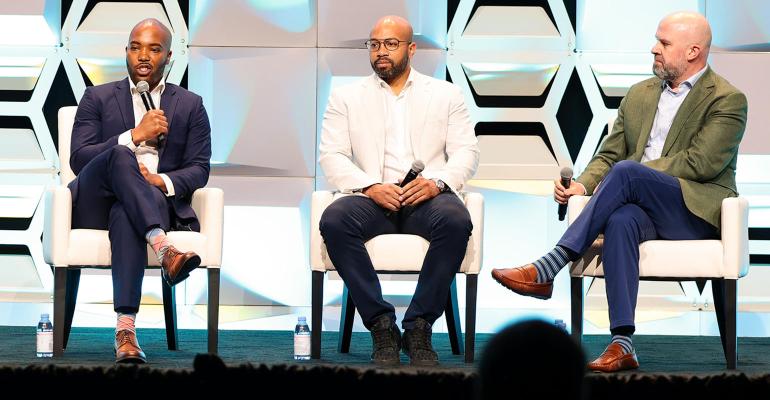The next step in the evolution of alternative investment platforms should be a more targeted approach to matching RIAs with the most suitable funds and asset managers for their client base, according to the speakers at Inside ETF+, part of Wealth Management EDGE at The Diplomat Beach Resort in Hollywood Beach, Fla.
As the size of the global alternative investment market grew from $8 trillion in the mid-2000s to $20 trillion today, the challenge for RIAs has changed from spotting that rare alternatives opportunity that made sense to being doused with a firehose of different pitches, said Andrew Stewart, CIO of Exchange Capital Management.
The process is further complicated because a lot of the growth in the alternatives space is coming from the private wealth channel rather than from more experienced institutional investors, and RIAs must remain careful to fulfill their fiduciary duty while recommending these products to clients. Sometimes, that nuance can be very fine. Stewart mentioned while it makes sense to invest in funds across the full spectrum of liquidity for very large, financially secure clients, he would think twice about recommending a semi-liquid fund to a client who barely qualifies for it.
“I think it’s important to start with segmentation. You can’t talk about automation, and you can’t talk about features that evolved in the alternative investment process without segmenting your client book,” said Devon Drew, CEO of Asset Link.
To reap the benefits of automation that alternative investment platforms provide, RIAs first need to break their clients into groups based on their accreditation levels and need for liquidity and figure out which asset types and fund structures would best serve their needs, he said.
According to Stewart, RIAs also need to consider which alternative investment opportunities they want to pursue and which fund managers they want to work with so they are not overwhelmed by pitches.
He said the multiple stakeholders, including custodians, that come into play when retail wealth managers pursue alternatives make the process much more time-consuming and complicated than it is on the institutional side. Stewart brought up an example of a firm that wants to allocate $75,000 each on behalf of 200 clients to an alternatives-focused fund. Those RIAs now have to work through 200 separate sets of documents. “It’s not scaleable. There are folks out there who are trying to bridge the gap between the ideal and the actual process, but it can be rough,” he said.
Stewart noted advisors would be well-served to narrow down which alternative asset classes they are interested in, what types of fund structures they can work with and which custodial platforms those funds would have to be accessed from before jumping on the investment platforms. Exchange Capital Management might like fund X, but if fund X is not offered by Schwab or Fidelity, while 12 similar funds are, the firm will have to go with the funds available on the custodial platforms it uses, he said.
To make the process easier for advisors, fund managers should also segment their offerings to match with RIAs with clients who qualify for them, according to Drew. “In order to scale and automate, I think it is imperative to somewhat integrate it in their distribution strategy with advisors,” he noted.
At the same time, asset managers must continue investing in personal relationships with advisors, added Stewart. This makes the investment process more efficient and allows RIAs to contact the asset manager and discuss what's happening if a fund is not performing as expected, so they can then relay that information to their clients and prevent them from panicking.
“These aren’t just numbers; these are real humans allocating capital,” he said. "The relationships really matter.”





